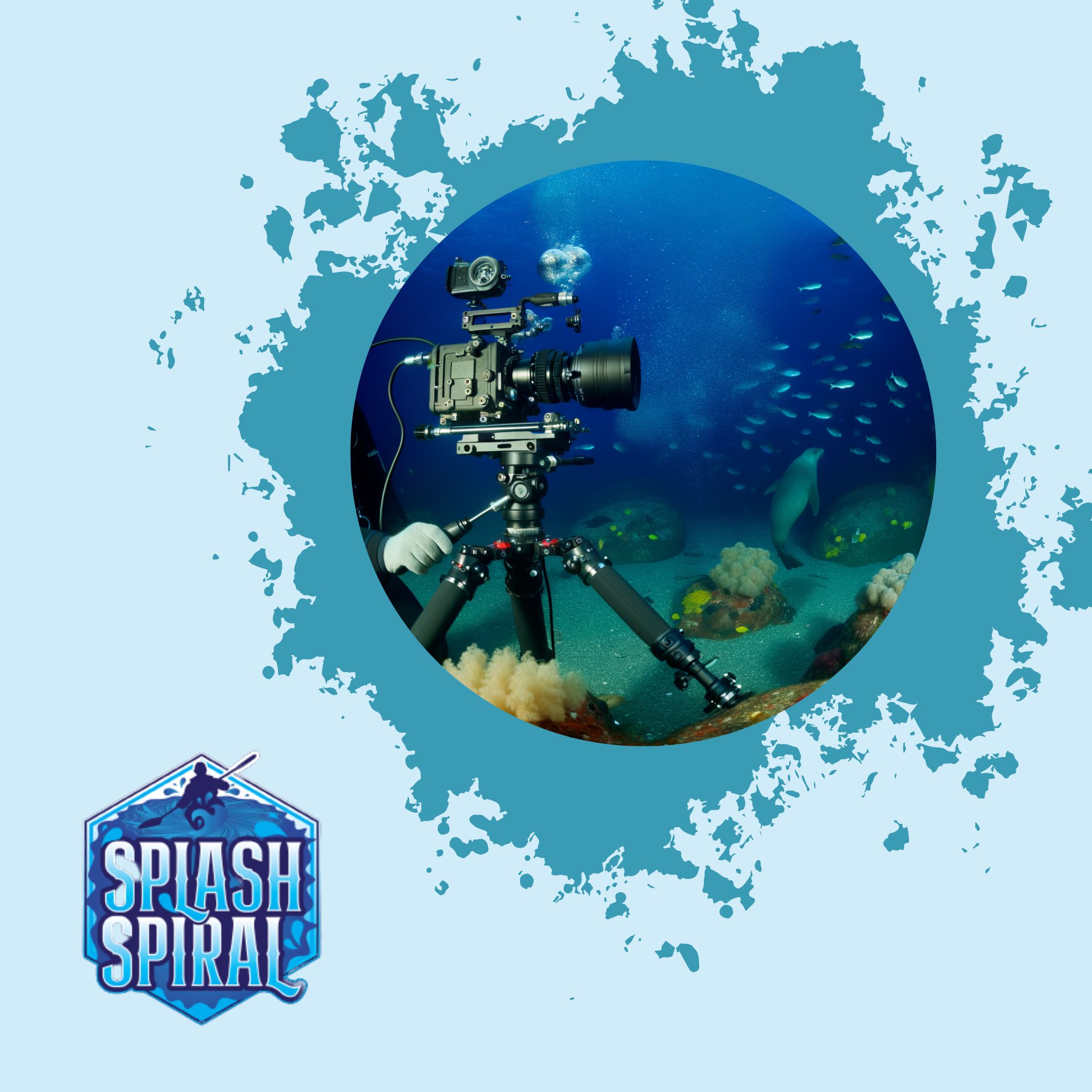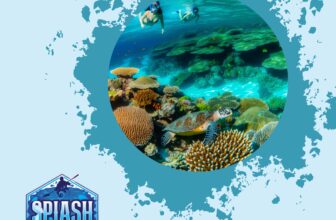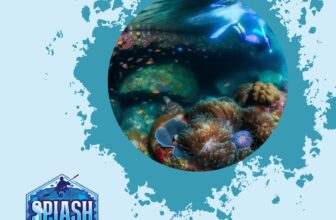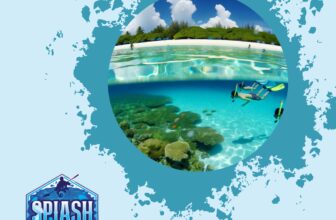
Hey there, underwater explorers! Diving into the icy depths can be a thrilling experience, providing you with unique marine life encounters and jaw-dropping underwater landscapes. But let's face it: cold water diving comes with its own set of challenges, especially when it comes to photography. To help you capture those epic underwater shots, we’ve put together a concise guide on the best gear you'll need. Let's get started!
Introduction
Welcome to the world of cold water diving! If you’re intrigued by the idea of exploring underwater realms where crystal-clear waters and unique marine life await, you’re certainly not alone. Cold water diving offers a refreshing alternative to the tropical waters most divers frequent. Picture this: schools of shimmering fish darting around vibrant kelp forests, mysterious shipwrecks cloaked in marine growth, and maybe even a curious seal swimming by to check you out.
However, let’s not kid ourselves—cold water diving isn’t a walk in the park. The chilly temperatures and lower visibility present challenges that require specialized gear, especially for underwater photography. The right equipment not only helps you capture stunning shots but also ensures your gear’s integrity and your own safety. So, let’s dive deep and discover the must-have underwater photography gear for your next cold water adventure!
Must-Have Cold Water Underwater Photography Gear
Alright, let's dive into the essential gear you'll need for cold water underwater photography. From rugged cameras to dependable housings, this section covers it all. Get ready to snap some amazing underwater shots!
1. Underwater Cameras
a. Compact Cameras
Compact cameras are a fantastic entry point for beginner underwater photographers. They're easy to use, relatively inexpensive, and still offer great image quality. For those just starting out, consider:
- Olympus Tough TG-6
- SeaLife Micro 3.0
These cameras are known for their durability, user-friendly interfaces, and impressive underwater modes.
b. Mirrorless Cameras
If you're looking for an upgrade, mirrorless cameras are where it's at. They provide excellent image quality and are generally lighter than DSLRs, which can be a significant advantage when you're juggling gear underwater. Popular models include:
- Sony a7R IV
- Canon EOS R6
Their interchangeable lenses allow for tremendous flexibility, from macro shots of tiny critters to wide-angle views of kelp forests.
c. DSLRs
For those serious about underwater photography, DSLRs deliver outstanding image quality and rapid autofocus, crucial for capturing fast-moving marine life. Favored models among professionals are:
- Nikon D850
- Canon EOS 5D Mark IV
While they require more investment and come with a steeper learning curve, the results are often well worth the effort.
2. Housings and Accessories
a. Camera Housings
Your camera needs a good home when diving in cold waters, and that's where housings come in. A robust and reliable housing keeps your camera dry and protected. Recommended brands include:
- Nauticam
- Ikelite
- Sea & Sea
Look for housings made from durable materials like aluminum or high-quality polycarbonate that cater to various camera models.
b. Strobes and Underwater Lighting
In colder, murkier waters, good lighting is crucial to illuminate your subjects and bring out vibrant colors. Consider:
- Strobes: Inon Z330, Sea & Sea YS-D3
- Continuous Lights: Bigblue VL4200P (ideal for video)
c. Lenses and Ports
Choosing the right lenses is essential for capturing stunning underwater images. Here's a quick guide:
- Wide-Angle Lenses: Great for seascapes and large subjects
- Macro Lenses: Excel at capturing the little details of small creatures
When it comes to ports, decide between:
- Dome Ports: For wide-angle lenses
- Flat Ports: For macro lenses
Both have their unique advantages depending on your shooting preferences.
3. Exposure Protection for Gear
a. Moisture Absorbers
Keeping your gear dry and fog-free is a must, especially in cold waters. Consider using moisture absorbers like:
- Silica Gel Packs: Products like Desiccant Silica Gel Packets are effective in keeping things dry and ready for action.
b. Gear Insulation
Cold temperatures can be hard on your equipment. Insulated cases can help protect your gear from the harsh elements. Look for options from:
- Pelican
These brands offer excellent protection and insulation properties for your gear.
By choosing the right gear, you'll be well-prepared to capture incredible images in the chilly underwater world. Stay tuned for more tips and advice on settings and techniques to take your underwater photography to the next level. Dive safe and happy snapping!
Beginner's Guide: Essential Tips for Cold Water Underwater Photography
So, you've got all the gear and you're ready to dive into the frosty waters. Before you hit that shutter button, let’s go over some essential tips to make sure you get the best shots possible.
1. Camera Settings
Adjusting your camera settings is crucial when diving in cold water, where light behaves unpredictably and conditions can change rapidly.
ISO
Start with a low ISO setting like 100 or 200 to minimize graininess in your photos. If you find yourself in darker conditions, increase the ISO incrementally. Just be cautious: higher ISO settings can introduce noise.
Shutter Speed
Aim for a faster shutter speed to capture crisp images and reduce motion blur caused by water movement. A good starting point is between 1/125 to 1/250 seconds, depending on your subject.
Aperture
For better depth of field and sharper images, go for a smaller aperture (higher f-stop number). However, in low-light conditions, you may need to open up your aperture to let in more light. Balance is key.
2. Framing and Composition
Nailing your composition underwater can be a game-changer. Here are a couple of pointers to get you started:
Rule of Thirds
Imagine your frame divided into nine equal sections. Placing your subject where these lines intersect often results in a more dynamic and appealing photo. This is classic advice but it works well, even underwater.
Foreground, Midground, Background
Include different elements at varying distances from your camera to add layers and depth to your shots. This technique captures the underwater environment in a more three-dimensional way.
3. Marine Life Photography
Interacting with marine life is one of the most thrilling aspects of underwater photography, but it’s essential to approach it respectfully.
Patience and Distance
Don’t rush towards your subjects. Maintain a respectful distance and allow them to get used to your presence. This often results in more natural and visually engaging images.
Natural Behavior
Capture marine animals while they’re engaged in their natural activities. The key is to blend in and observe discreetly, allowing you to photograph genuine behaviors and interactions.
For more insights on photographing marine wildlife ethically, check out our article on ethical whale and dolphin photography.
There you have it, aspiring underwater photographer! Implement these tips on your next dive, and you're well on your way to taking stunning cold-water shots. Happy diving!
Advanced Tips: Taking Your Cold Water Photography to the Next Level
Hey, you've got your basic shots down pat, and now you're ready to tackle more complex and challenging situations. Let’s dive into some advanced tips that will help you elevate your cold water underwater photography game.
1. Shooting in Low Light Conditions
The deeper you go, the less light there is to play with. Add in the murkiness of cold water, and you’ve got a recipe for some seriously dark environments. Don't worry; you can still capture stunning shots with a bit of know-how.
Master Your Camera Settings
- ISO: Crank up the ISO to make your sensor more sensitive to light. Just be cautious of increasing it too much, as it can introduce noise.
- Shutter Speed: Slow down your shutter speed, but not so much that your photos become blurry. Aim for a balance—typically around 1/60th to 1/125th of a second.
- Aperture: Open up your aperture (lower f-number) to let in as much light as possible. However, bear in mind that this may affect your depth of field.
2. Mastering Underwater Lighting
Lighting underwater can be a tricky beast, but it’s crucial for clear, vibrant images. Here’s how to make the most of your strobes and continuous lights.
Strobes vs. Continuous Lighting
- Strobes: These are great for freezing fast-moving subjects and minimizing motion blur. Place strobes at a 45-degree angle to your subject to reduce backscatter.
- Continuous Lighting: Useful for video or when you need to see what your shot will look like in real-time. Handy for softer, more natural light.
Lighting Angles and Techniques
- Try to light your subject from the side or slightly above to create depth and avoid flat-looking shots.
- Use two lights at varying angles to balance shadows and reduce backscatter—a phenomenon where particles in the water reflect light back at your camera.
3. Post-Processing and Editing
You’ve snapped your shots; now let’s polish them to perfection. Post-processing is an essential part of underwater photography, helping you bring out colors and details that might not be immediately visible.
Tools and Software
- Adobe Lightroom: Great for batch editing and adjusting exposure, contrast, and colors.
- Adobe Photoshop: Ideal for more intricate touch-ups and removing unwanted elements.
- Luminar: A user-friendly alternative with powerful AI-driven features.
Learning Resources
- Check out free tutorials on YouTube or invest in online courses on platforms like Udemy and Skillshare to get comfortable with these tools.
- Practice is key. The more you play around with editing software, the more intuitive it will become.
There you go, some advanced tips to turn your cold water underwater photos from good to mind-blowing. Time to don that wetsuit, charge up those strobes, and get snapping!
Common Challenges and How to Overcome Them
1. Equipment Maintenance
One of the most critical aspects of underwater photography is maintaining your gear—especially in cold water conditions where equipment can easily degrade without proper care. After every dive, rinse all your gear thoroughly with fresh water to remove salt, sand, and other debris. Pay special attention to rinsing moving parts such as buttons and knobs on your camera housing. Ensure you dry everything completely before storing it to prevent corrosion and mold. Remember, a clean and well-maintained setup can significantly prolong the lifespan of your equipment.
2. Managing Buoyancy
Getting that perfect shot often means keeping your camera stable, which requires excellent buoyancy control. For beginners, focusing on your breathing pattern is key—slow, deliberate breaths will help maintain your position in the water. It's also helpful to use a weight belt or integrated weights to fine-tune your buoyancy. Practicing your buoyancy skills in a controlled environment, like a pool, can make a world of difference before you hit the open waters. Remember, steady divers take steady photos.
3. Dealing with Cold Temperatures
Cold water diving can be harsh, and staying warm is essential not just for comfort but for safety too. Investing in a high-quality dry suit is crucial, as it provides better insulation compared to a wetsuit. Layering up with thermal undergarments and choosing gloves with good dexterity will also help you stay warm without losing the ability to handle your camera. To avoid hypothermia, make sure to recognize the signs—such as shivering, numbness, and reduced motor skills—and end your dive if you start to experience any of them. Always monitor your body's response to the cold and adjust your dive plans accordingly.
Navigating these common challenges might seem daunting at first, but with the right preparation and practice, you'll find that capturing stunning underwater imagery becomes much more manageable. Happy diving!
Conclusion
In summary, mastering the art of cold water underwater photography is all about having the right gear to meet the unique challenges of the icy depths. With a reliable camera, robust housing, and essential accessories, you’ll be well-equipped to capture stunning underwater vistas and fascinating marine life. Always remember that the key to success lies in practice and exploration. So suit up, dive in, and start snapping those incredible underwater moments. Happy diving!
Additional Resources
If you're fired up and ready to dive deeper into the world of underwater photography, we've got a stash of resources just for you. Check out these articles to further sharpen your skills and knowledge:
-
How to Photograph Underwater Caves and Caverns: Master the art of capturing mysterious caves and caverns lurking beneath the waves.
-
Capturing Marine Mammals: Ethical Whale and Dolphin Photography: Learn the dos and don'ts of photographing these magnificent creatures while ensuring their well-being.
-
Scuba Diving Tips and Tricks: From beginner to pro, these tips will make your dives smoother and safer.
- Diving Guides: Comprehensive guides to locations, techniques, and equipment for all your diving adventures.
Jump in and get snapping! The underwater world is waiting for your unique perspective.







